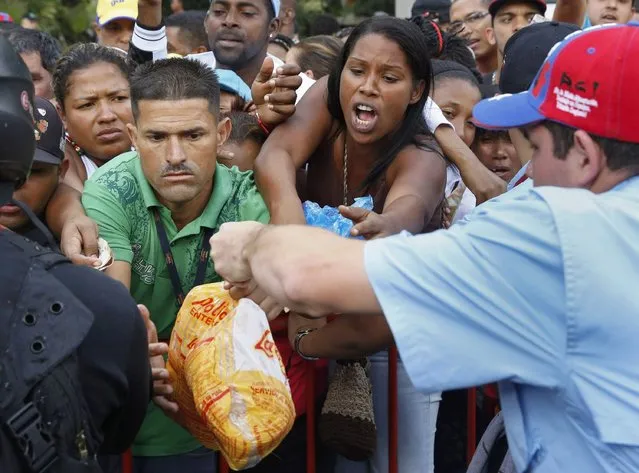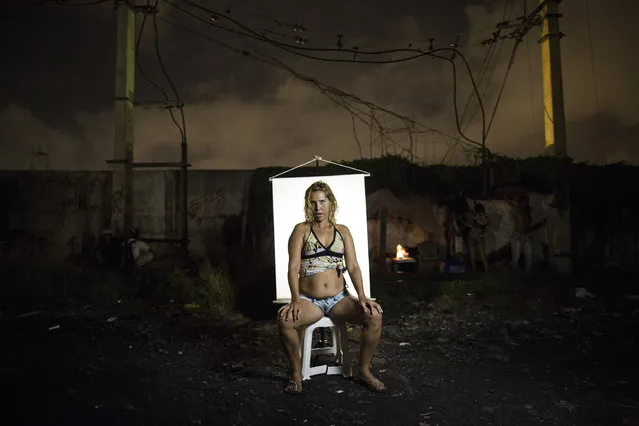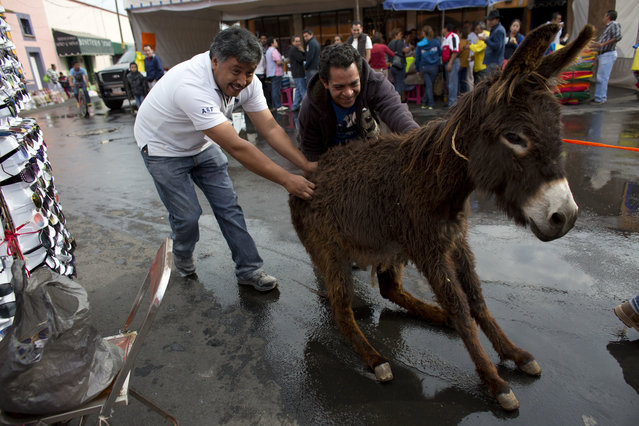
People crowd together in an attempt to buy chickens at a Mega-Mercal, a subsidized state-run street market, in Caracas January 24, 2015. President Nicolas Maduro shook up complex currency controls on Wednesday and also prepared Venezuelans for a rise in the world's cheapest fuel prices in response to a recession worsened by plunging oil revenue. The socialist-run OPEC member's economy shrank 2.8 percent in 2014 while inflation topped 64 percent, the socialist leader announced in a speech to parliament, in what is almost certainly the worst performance in Latin America. (Photo by Carlos Garcia Rawlins/Reuters)
25 Jan 2015 09:44:00,post received
0 comments







